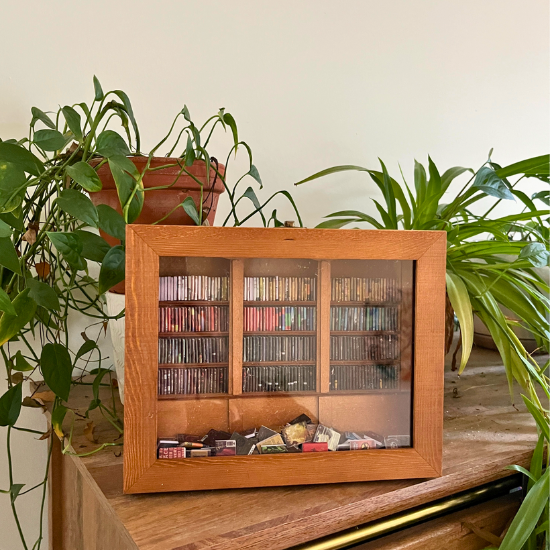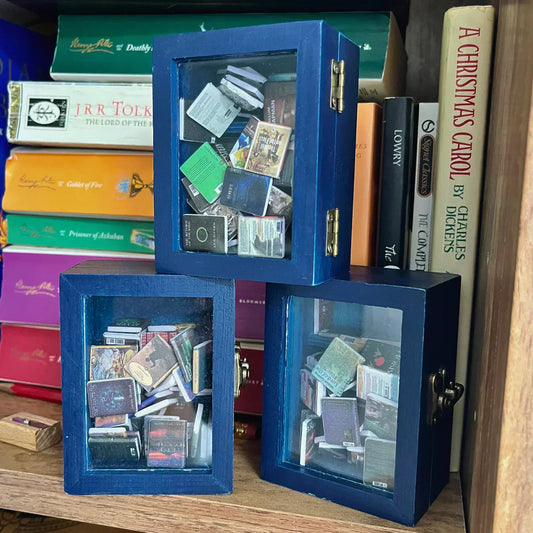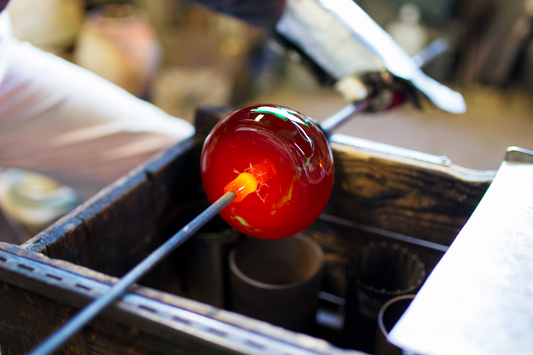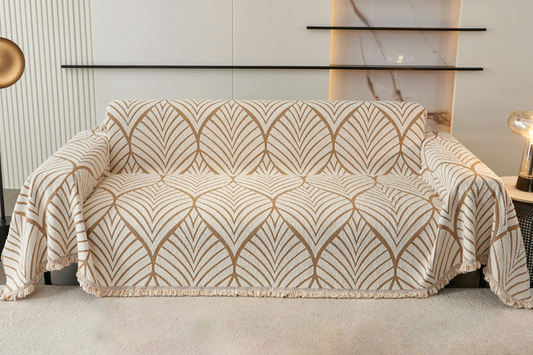Understanding the Art of Handmade Glass
Are you ready for a good read? Here is a 'full-blown' summary of everything glass. We're going to dive into recognizing and appreciating handmade glass!
What's on the Menu?
We will take a look at different types of glass used for glass products, the various techniques artisans use to shape and manipulate glass, and how to distinguish handmade pieces from mass-produced ones. So, if you're fascinated by delicate, hand-blown vases or intricate etched designs, this guide will give you a deeper understanding of the artistry behind glassmaking.
Pre-Summary (TLDR)
Glass art isn’t just about the final piece—it’s about how it’s made. At Sydney's, we believe that the process behind each piece determines its character, durability, and even its value. Handmade glass typically falls into three categories: hot, warm, and cold. Each method has its own set of techniques, and understanding them can help you appreciate the artistry behind every blown vase, etched window, or fused glass figurine.

What is Hot Glass in Glasswork?
Hot glasswork is what most people picture when they think of glassblowing—molten glass at 2000°F, glowing like lava, shaped into elegant forms. This method includes:
- Blown Glass: Made using a blowpipe to shape molten glass into vases, goblets, and sculptures. The process requires quick movements and precise timing to form the desired shape before the glass cools.
- Solid Sculpted Glass: Instead of blowing, the artist manipulates molten glass directly with tools to create figures, abstract forms, or paperweights like our adorable little glass crabs.
- Cast Glass: The molten glass is poured into a mould to create solid shapes, often with intricate details. An example of this is embedding items into the glass, for example, our embedded dice whiskey glass.
These pieces often have a smooth, organic look—sometimes with visible tool marks or a pontil mark on the bottom, a telltale sign of hand-blown craftsmanship. You will see these in our blown glass Christmas ornaments.
What is Warm Glass Used For?: Fusing and Slumping
Warm glass techniques involve heating glass in a kiln but at lower temperatures than hot glasswork. This category includes:
- Slumped Glass: A flat sheet of glass is gently heated (1250°–1400°F) until it bends into a mould, forming dishes, bowls, or curved panels.
- Fused Glass: Pieces of glass are layered and heated until they melt together (1400°–1600°F), often creating colourful, mosaic-like designs.
- Pâte de Verre: A mixture of crushed glass and a binder is moulded and kiln-fired, resulting in a delicate, frosted appearance.
Warm glass techniques allow for a mix of structure and fluidity, making them popular for decorative panels, jewelry, and art pieces with layered effects.

How is Cold Glass Used in Glasswork?
Cold glass techniques involve working with glass at room temperature—no furnaces or kilns are required. Instead, artists refine and embellish glass using:
- Grinding and Polishing: Used to smooth edges, shape surfaces, or create a frosted effect.
- Etching: Either acid-etched (using hydrofluoric acid) or sandblasted (using a high-pressure abrasive), creating intricate patterns or a soft, matte texture.
- Engraving: Carved details are added using specialized tools, resulting in detailed images or text on glass.
Cold working is often the final step in glass art, adding refinement and detail to hot or warm glass pieces.
What is Flameworking?: A Category of Its Own
Flameworking, also called lampworking, is a unique technique that falls somewhere between hot and warm glass. Artists use a torch to melt pre-made glass rods or tubes, shaping them into beads, jewelry, or intricate figurines like our little glass dogs. This method is popular with scientific glassblowers and independent artists alike due to its precision and flexibility.
How to Spot Hand-Blown Glass
With mass production on the rise, distinguishing hand-blown glass from machine-made versions can be tricky. Here’s what to look for:
- Pontil Mark: A small scar on the bottom, left from the glassblower’s rod.
- Variations in Thickness: Handmade glass often has slight variations, while machine-made glass is uniform.
- Surface Texture: Subtle imperfections or tool marks indicate hand craftsmanship.
- Unique Designs: One-of-a-kind patterns or colour variations suggest an artisan's touch.
- No Seam Lines: Machine-made glass often has visible seams from moulds.
- Higher Price: Handmade glass reflects the skill and time invested in its creation.
- Artist’s Signature: Some artisans engrave their name into their work, a hallmark of authenticity.

Let's Get You Started on Your Glassworking Journey
If you're inspired to delve into the art of glassblowing, a variety of online resources and local workshops can help you get started. Here's a curated list of options to consider:
Online Resources & Courses
- Revere Glass: Offers a comprehensive online school with over 350 hours of content, including courses, workshops, and tutorials. They provide a free trial to help you begin your glassblowing journey. Revere Glass
- Glassblowers Guide: Provides high-quality instructional videos focused on working with soft glass in the hotshop. Their "Understanding Hot Glass" course includes 22 video lessons diving deep into the techniques and principles of glassblowing. glasscolor.com
- Gather Glass: Offers an "Introduction to Glass Blowing" course designed for beginners. This program guides participants through fundamental techniques and tools used by master glassblowers, with personalized instruction and hands-on practice. Gather
- YouTube Tutorials: Platforms like YouTube host various tutorials and demonstrations, search; 'How to Blow Glass? Basic Glass School Tutorial, Glass blowing online course' etc. This can provide foundational insights into the craft.

Studio-Based Workshops & Classes in Toronto
- Playing with Fire: Toronto's premier glassblowing studio offers workshops geared for beginners. Participants learn various aspects of the ancient art of glassblowing through hands-on experiences. Fire Glass Workshops
- Turnstyle Glassblowing Studio: Open to the public, this studio provides a range of workshops suitable for both beginners and professionals. Their course catalogue includes long and short-form classes to get you acclimated to the studio environment. Turnstyle Glassblowing Studio
- Harbourfront Centre: Offers an "Introduction to Glass Blowing Weekend" workshop. This three-day course covers solid and blown forms, color application, hot and cold techniques, studio equipment, and safety protocols. Harbourfront Centre
- Verbeek Glass Studio: Located at 250 Carlaw Avenue, this studio offers various workshops and classes in glass art. They provide opportunities for both individuals and groups to learn and create glass pieces. Verbeek Glass Studio
- Toronto Flameworking: Provides lessons ranging from basic introductory classes to intermediate and advanced workshops, covering more complex techniques in flameworking. torontoflameworking.ca
Things to Consider When Choosing a Course or Workshop
- Skill Level: Select courses or workshops that match your experience, whether you're a complete beginner or seeking to advance your skills.
- Hands-on Experience: Look for programs that offer practical, hands-on practice with personalized instruction.
- Studio Environment: Consider the studio's safety protocols, equipment quality, and overall learning atmosphere.
- Cost and Duration: Compare the fees, length, and frequency of different courses or workshops to find one that fits your schedule and budget.
- Location: For in-person classes, choose studios that are conveniently located or explore online options if proximity is a concern.

The Beauty of Handmade Glass
Whether it’s the molten dance of hot glass, the structured elegance of kiln-fused pieces, or the meticulous detail of cold working, handmade glass carries a story in every curve and contour. Each piece is a fusion of fire, time, and human artistry—something machines can’t replicate.
Read more about our small hand-blown glass orb vases here;
Colourful Glass Orb Bud Vases- Decorative Spheres for Propagation
View our selection of handmade glass products here:
Head back to the journal for more interesting reads:













